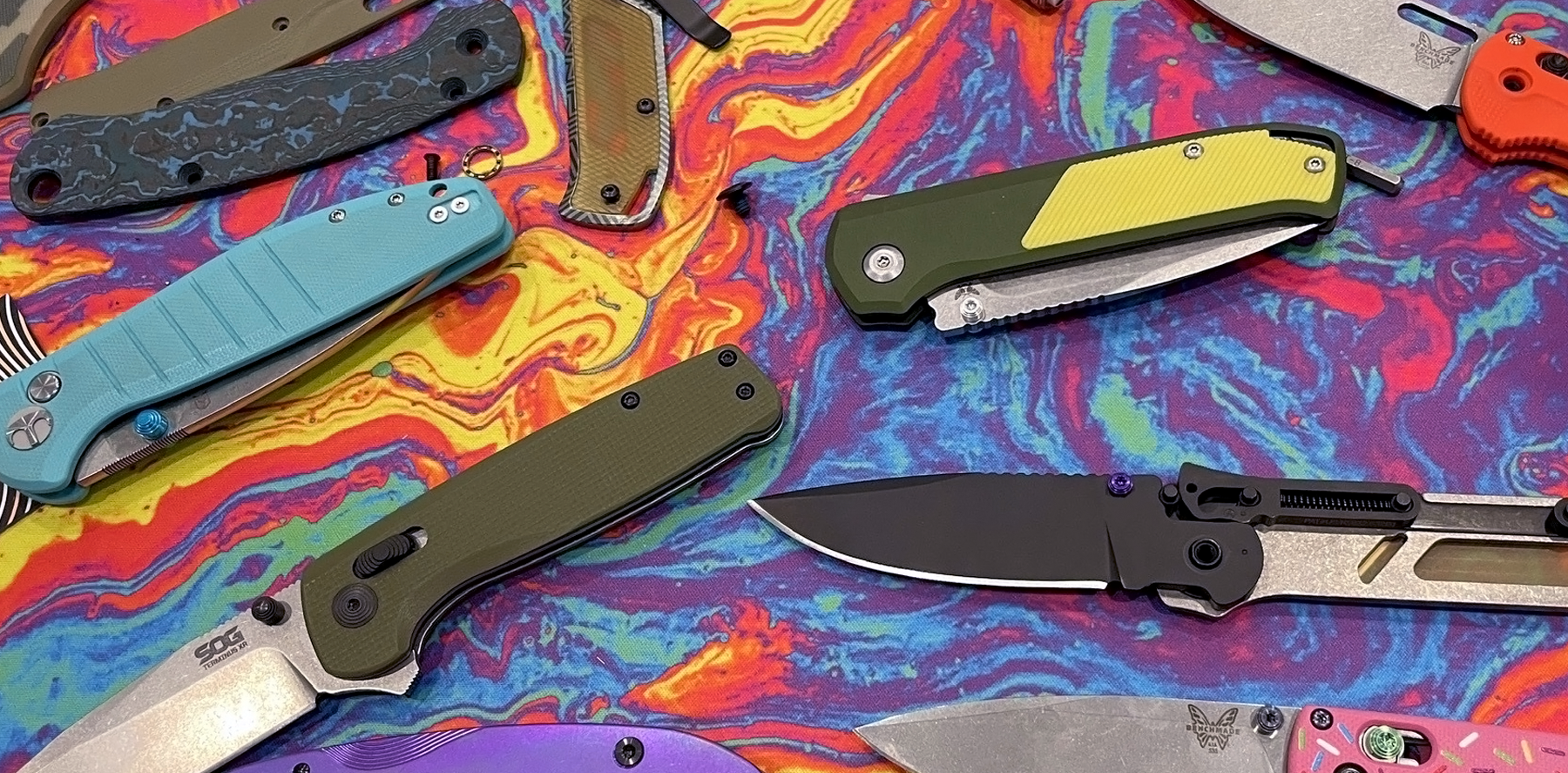What is Anodizing?
Anodizing is a process that manipulates the natural oxide layer found on metal surfaces, and is a durable, non-corroding finish. It can be done with heat, acid, or electricity. Adding different quantities of acid, heat, time, and electricity leads to different colors and patterns. Each product will come out slightly different, based on differences on temperature, chemical concentration, and amperage.
Anodizing is a surface-level change to the material, if you really wanted to, you could buff the finish off your knife to bring it back to gray. To brighten and restore your piece – use a gentle cleaner like Windex to help bring out the refractive properties.
Titanium Anodizing
You’re probably familiar with Type III Titanium anodizing – it’s what we use to create our custom Modifly finishes. Type I and Type II are used for industrial purposes. Type I is the thinnest anodizing finish available – the semiconducting oxide layer is good for thermal control and as a pre-treatment before extrusion. It’s most often a gray/silver color.
Type II is thicker than Type I, it is often used in both the medical and aerospace fields. The thicker oxide layer helps to reduce friction, improve wear over time, and provide corrosion resistance. It also has a large range of temperature applications, from -70 to 260 F. The anodized titanium initially has a white film that gets bead blasted off to reveal a gray color. Both Type I and Type II are subject to AMS 2488 standards, unlike Type III.
Type III anodizing is the thickest oxide finish available, with high corrosion resistance, uniformity, and wear resistance. It can be used to easily differentiate parts in the medical and mechanical contexts. We mostly use it for decorative purposes. By creating an oxide layer with heat, acid, or electricity, we disrupt the light reflecting and refracting, leading to different colors.
To achieve a solid color finish, Titanium is dipped in a warm acidic solution, rinsed off, then put into a container with an electrical current running through the water. The piece will then slowly change colors, going through the whole anodization rainbow!
Aluminum Anodizing
Aluminum can be anodized, like titanium. However, aluminum anodizing has some differences. Type I is the thinnest anodizing method available. Aluminum is placed in a chromic acid bath to create a thin anodic layer. This is commonly used in areas that need a durable, flexible part, such as aeronautics and military defense purposes. It can also be used as a base for Type III anodizing.
Type II anodizing, also known as bright dip, is the most common type of aluminum anodizing. Aluminum is chemically treated to smooth out imperfections on a microscopic level, providing a surface for the oxide layer to grow. From there, it’s dipped into an acid bath with a cathode to produce an oxide layer and change the refractive index, providing a range of colors. The oxide layer will grow perpendicularly to the surface, both above and into the metal. This oxide layer will minutely increase the hardness of the aluminum. However, a drawback of this anodizing process is the weak spots the oxide layer leaves on corners and edges due to the nature of the oxidization pattern.
Type III anodizing is a hard coating typically found on military and aviation pieces. This is also the thickest type of anodizing available. Type III anodizing is very similar to Type II anodizing, the main difference being a lower temperature and higher voltage in the acid bath. This coating significantly increases the hardness of the aluminum, making it ideal for when an extremely durable and tough surface is needed. The end color range is darker and more muted than type III. The final color is based on factors such as the alloy type, temperature, chemical composition, and voltage used.



